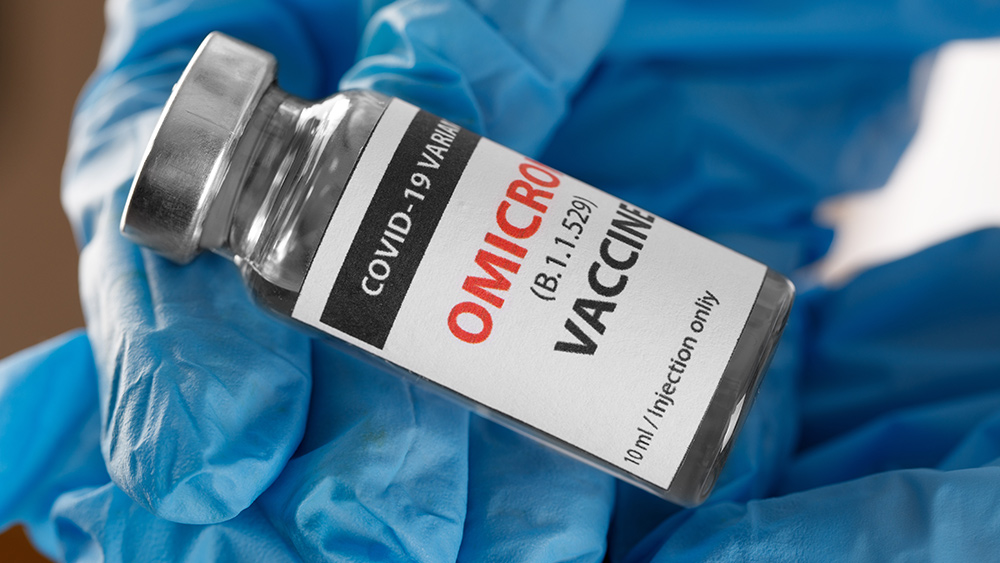Mars may harbor alien life beneath its surface, study suggests
04/28/2021 / By Virgilio Marin

A new study published in the journal Astrobiology suggests that the subsurface of Mars may be habitable. In the study, researchers explain that the same chemical reactions supporting microbial life deep beneath the Earth’s surface can occur in the Martian underground. An important component for those reactions is water, and past studies suggest that Mars may be hosting groundwater.
“The big implication here for subsurface exploration science is that wherever you have groundwater on Mars, there’s a good chance that you have enough chemical energy to support subsurface microbial life,” said Jesse Tarnas, a postdoctoral researcher at the National Aeronautics and Space Administration‘s (NASA) Jet Propulsion Laboratory, who led the study as a doctoral student at Brown University.
“We don’t know whether life ever got started beneath the surface of Mars, but if it did, we think there would be ample energy there to sustain it right up to today,” Tarnas went on.
Searching for habitable environments on Mars
Over the past few decades, scientists have discovered that Earth’s subsurface is home to hardy microbes known as extremophiles. In Canada’s Kidd Creek Mine, for instance, extremophiles have been found more than a mile beneath the surface, in water that hasn’t seen the light of day in over a billion years.
As to how these tough creatures manage to survive without sunlight, they subsist on the byproducts of chemical reactions that occur when rocks come into contact with water.
One such reaction is radiolysis, which occurs when radioactive elements in rocks react with water trapped in pore and fracture space. The reaction breaks down water into its constituent hydrogen and oxygen molecules. The liberated hydrogen is then dissolved in the remaining water, while minerals soak up free oxygen to form sulfate minerals. Microbes can then use the dissolved hydrogen as fuel and the oxygen preserved in the sulfates to “burn” that fuel.
For their study, Tarnas and his colleagues were curious about whether Mars is capable of supporting radiolysis-driven habitats. To that end, they analyzed data from NASA’s Curiosity rover and other orbiting Mars spacecraft, as well as compositional data on different Martian meteorites, to look for the ingredients for radiolysis on Mars.
They found radioactive elements, sulfide minerals that could be converted into sulfate and rock units with adequate pore space to trap water in different types of Martian meteorites. These ingredients were present in the rocks in adequate abundance to support Earth-like habitats. Regolith breccias, in particular, had the highest potential for supporting life. These are meteorites that originated from crustal rocks that date back to more than 3.6 billion years ago.
Exploring the subsurface of Mars
The researchers said that the findings made a compelling case for an exploration program that would look for signs of alien life in the Martian subsurface. They explained that past research confirmed the presence of a groundwater system on young Mars, which suggests that groundwater exists to this day. In fact, a study published last year detected evidence for existing subsurface lakes beneath the Martian south pole.
While NASA’s Perseverance rover is already on the hunt for signs of Martian life, its instruments can only map layers of rock that are up to 33 feet deep. By comparison, those subsurface lakes are hidden below a mile from the surface. (Related: Scientists say the best place for life on Mars is underground.)
“The subsurface is one of the frontiers in Mars exploration,” said Jack Mustard, a professor of earth, environment and planetary science at Brown and one of the study’s researchers. “If we want to think about the possibility of present-day life, the subsurface is absolutely going to be where the action is.”
Follow Space.news for more stories about the Red Planet.
Sources include:
Tagged Under: alien life, aliens, breakthrough, cool science, cosmic, discovery, ecosystem, ecosystems, environment, extremophiles, future science, Life on Mars, Mars, Mars habitat, Martian life, radiolysis, research, signs of alien life, Space, water
RECENT NEWS & ARTICLES
COPYRIGHT © 2017 DISCOVERIES NEWS





















